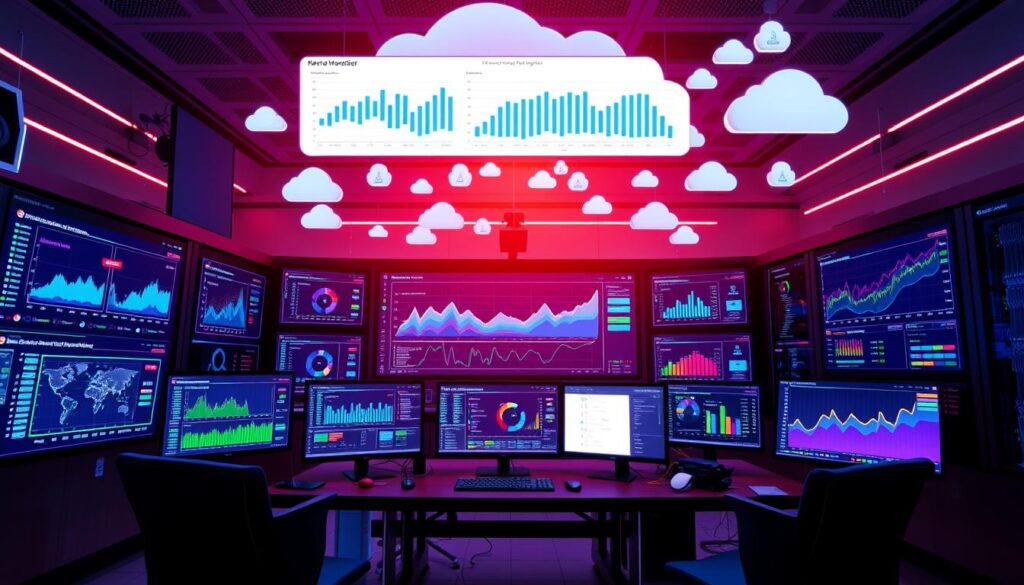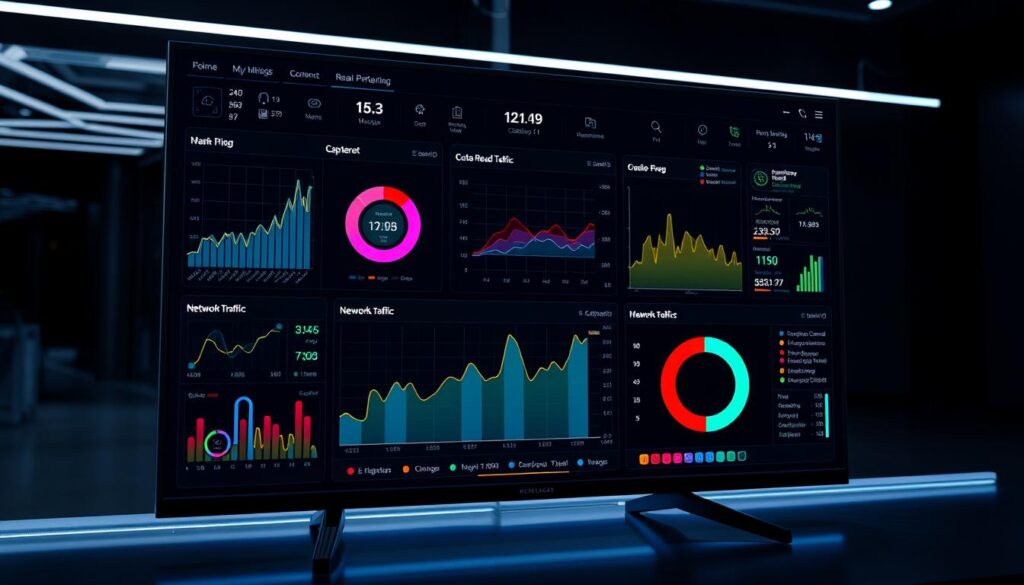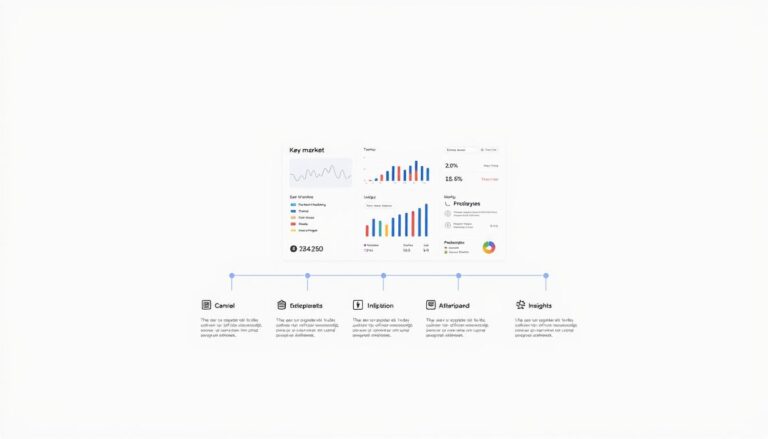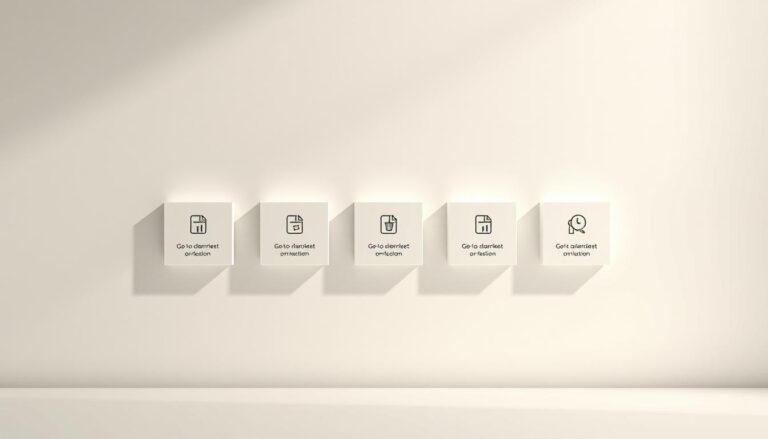In our fast-paced digital world, uptime equals money. This is why software solutions for performance monitoring are crucial for IT setups. These advanced performance monitoring platforms help businesses keep their IT services strong and quick. With tools like Splunk, New Relic, and AppDynamics, performance monitoring is changing IT work. It gives valuable data on how systems are doing and what users feel.
IT experts can look closely at things like how fast responses are, errors, and how much resources are used. They can find problems very clearly because of this. Modern software offers real-time monitoring, past data, and smart alerts. This helps IT teams prevent problems before they happen. This careful way of managing performance doesn’t just lower downtime. It also makes users happier and makes IT services look better.
Key Takeaways
- Crucial role of performance monitoring software in guaranteeing IT systems’ efficiency and reliability.
- Advanced tools like Splunk, New Relic, and AppDynamics provide essential metrics for IT health.
- Real-time data coupled with historical analysis for proactive performance management.
- The impact of performance monitoring systems on reducing downtime and improving user experience.
- The importance of integrating a performance monitoring platform in maintaining a robust digital infrastructure.
- Insights from performance metrics significantly influence strategic IT decision-making.
- Using intelligent alerting to stay ahead of potential issues and maintain system integrity.
Introduction to Performance Monitoring Software Solutions
Today’s digital age demands strong software performance monitoring solutions for businesses. These tools are key for high operational efficiency and making customers happy. They are the heart of managing IT infrastructure well.
Importance of Performance Monitoring
Software performance monitoring is all about spotting problems early. This can affect how users feel and how smoothly things run. By using synthetic monitoring and agentless monitoring, businesses can check on user activities and network flow without needing to install anything. This forward-thinking step helps keep systems up and ensures high performance matches what users expect and what’s promised in service-level agreements (SLA).
Key Features of Effective Software Solutions
The top best performance monitoring software offers a full view of a company’s IT scene. It goes beyond simple checks with APM tools that track memory use, CPU need, and app health. This look across servers and networks is detailed.
Such tools manage lots of data from servers, databases, and virtual setups. They’re great at gathering, studying data, and even predicting problems with artificial intelligence and machine learning. This quick action prevents issues from getting big.
To show what APM tools do, here’s their monitoring breakdown:
| Component | Functionality |
|---|---|
| Runtime Application Architecture | Monitors the operational structure of applications in real-time. |
| Real User Monitoring | Tracks end-user interactions to gauge application performance in actual usage scenarios. |
| Business Transactions | Analyzes specific user interactions to optimize performance efficiency. |
| Component Monitoring | Monitors IT infrastructure components like servers and databases. |
| Analytics and Reporting | Provides insights into performance metrics, identifying improvements and predicting future issues. |
APM tools’ power to monitor, analyze, and foresee is critical in the digital world. They make sure businesses keep running, make customers happy, and connect app performance to business success.
Benefits of Using Performance Monitoring Tools
In today’s world, making IT systems better is crucial for businesses to succeed. Performance monitoring tools are key to this. They boost how well operations work and help in making smart decisions.
Enhanced System Reliability
Top performance monitoring software makes systems more reliable. It spots issues before they become big problems. This means systems run smoothly, keeping business going without unexpected stops.
Improved Resource Management
Performance monitoring solutions make managing resources easier. They make sure CPU, memory, and disk I/O are used in the best way. This stops performance problems, keeping IT systems fast and ready.
Real-time Analytics
Monitoring in real time is like having constant oversight. It helps fix problems fast. This makes an organization more flexible and quick to adjust. Plus, looking at past data helps predict and avoid future problems.
Here are key stats showing how performance monitoring solutions make a big difference:
| Enhancement Area | Percentage Improvement |
|---|---|
| Overall Performance Improvement | 24% |
| Reduction in Absenteeism | 81% |
| Boost in Productivity | 14% |
| Increased High Performers | 7% |
| Individual Performance Growth | 20% |

Business technology is always changing. We need tools that solve problems now and help plan for the future. Performance monitoring tools are great for today’s quick business world. They fix issues fast and make systems and resource management better.
Types of Performance Monitoring Software
IT teams use performance monitoring platforms to make sure networks and applications run smoothly. These tools quickly find and fix problems. This keeps IT systems healthy and efficient. We will look at different monitoring software types that help with various IT needs.
Network Monitoring Solutions
Network monitoring solutions keep an eye on an organization’s network. They check bandwidth, uptime, and faults. This is key for IT experts to prevent network problems and keep communication clear.
Application Performance Management
Application performance monitoring (APM) tools focus on how applications work. They look at code execution and user interaction. These tools help developers make applications run better.
Cloud Infrastructure Monitoring
With more businesses using the cloud, monitoring these infrastructures is vital. These tools track cloud resource use in real-time. This helps teams keep improving cloud applications to meet business goals.
Here is a pricing and feature comparison of performance monitoring platforms. You will see options for tight budgets and systems for big companies.
| Tool | Pricing | Key Features |
|---|---|---|
| Atatus | From $12/user/month (billed annually) | Real-time monitoring, Configurable alerts, Historical data analysis |
| Dynatrace | From $21/user/month (billed annually) | AI-powered insights, Full-stack diagnostics, Automated anomaly detection |
| LogicMonitor | Pricing upon request | Comprehensive IT infrastructure monitoring, Scalable architecture |
| Nagios | From $20/user/month (billed annually) | Extensive plugin ecosystem, Open-source flexibility, Multi-user access |
| Pingdom | From $15/user/month | Uptime monitoring, Real-user monitoring, Page speed analysis |
| AppDynamics | From $6/core/month | Business performance monitoring, End-to-end transaction tracing |
| Datadog | From $15/user/month (billed annually) | Cloud-scale monitoring, Integrated log management, Infrastructure visualization |
| Paessler PRTG | From $30/user/month (billed annually) | Flexible alerting, Customizable dashboards, Distributed monitoring |
| Sematext | From $14/user/month (min 3 seats, billed annually) | Server and app monitoring, Log management, Transaction tracing |
| SolarWinds AppOptics | From $99.90/month (10 hosts, 100 containers) | Infrastructure and application performance combined, Detailed anomaly tracking |
Performance monitoring platforms and application performance monitoring (APM) tools are key. They help IT environments support modern applications and network needs.
Choosing the Right Performance Monitoring Software
Today, picking the right performance monitoring solutions is vital for any organization. You need to carefully assess what your organization requires. Consider your system’s current needs, how well new software will work with it, and whether it can grow with you.
Assessing Organizational Needs
First, figure out what your organization really needs. Is it to streamline operations, boost performance, or increase productivity? Understanding these points makes choosing the right software solutions for performance monitoring much easier. With platforms like DecisionWise and Betterworks, businesses can choose tools that improve workforce efficiency. These tools not only monitor but also enhance how your team works.Learn more about performance enablement and compliance here.
Compatibility with Existing Systems
The next step is making sure the software fits with your current tech. Good integration eases the learning curve and makes everyone’s life easier. It should work well with systems you already use, like HRIS and learning management systems. This makes everything function more smoothly.
Scalability and Flexibility
It’s also essential that the software can grow and change with your business. The right performance monitoring solutions will meet your needs now and in the future. For fast-growing or changing enterprises, this means choosing software that can handle lots of data and complex setups easily.
In summary, choosing the best performance monitoring solutions needs careful thought. Consider what your organization needs, how the software will fit with your current tech, and if it can grow with you. By focusing on these aspects, you can get the most out of your technology investments. This leads to better operation and management of your team.
| Feature | Importance | Example Platforms |
|---|---|---|
| Real-time Feedback | Essential for timely improvements | DecisionWise |
| DEIB Integration | Critical for modern workplaces | Betterworks |
| Multi-language Support | Necessary for global operations | Varied International Software |
| Compliance and Security | Must adhere to regulations | Compliance-Centric Software |
Implementing Performance Monitoring Solutions
Effectively putting performance monitoring tools in place is key for making software and infrastructure better. When done right, a performance monitoring system can greatly increase how well operations run and make the user experience smoother.
Step-by-Step Implementation Guide
Start by figuring out which key performance indicators (KPIs) are important for your organization. Look at things like how fast responses are, error rates, how often systems are up, and how much resources are used. Then, pick a strong performance monitoring platform that fits your system’s needs, like Azure App Insights or New Relic.
- Install the needed agents or set up APIs to start gathering data.
- Change the application code as needed to add more monitoring options like tracing and custom metrics.
- Create dashboards to show performance data live. This lets you quickly act on new issues.
- Set alerts to tell teams about any performance issues. Make sure these alerts are clear about how urgent they are to get to the right people fast.
Using a step-by-step approach to make the most of performance monitoring tools. This way, you can guess future issues with machine learning and stop downtime. This enhances how happy users are with the service.
Training and Support Resources
After setting up the performance monitoring platform, training is crucial. Use resources from platform vendors like workshops, webinars, and written guides to teach your team how to use the tools well.
- Take part in practical sessions to learn interpreting data from the tools.
- Go to support forums and communities, like the 206 LinkedIn posts from experts, to learn more and get questions answered.
- Build an internal guide with tips and best practices for using the performance monitoring system.
Good training makes sure your team can use the tools well and adjust them to meet business needs that change over time.
Putting performance monitoring tools in place and getting the most out of them takes a clear plan. This includes setting up the system and teaching the team. Following these steps lets organizations run smoothly, solve problems before they grow, and offer a great experience for users.
Best Practices for Performance Monitoring
It’s key to have strong software performance monitoring to keep systems sound and excel in operations. Using best performance monitoring software backs this goal. It also makes IT systems better.

Setting Performance Benchmarks
Matching up with industry standards makes sure benchmarks are both doable and tough. For example, top apps keep error rates under 0.5%. Setting clear benchmarks helps in making real goals. It also lines up monitoring work with wanted results.
Regular Review and Optimization
Good software monitoring is all about checking and making things better regularly. Looking at metrics, like lead time, shows where slowdowns occur. This ongoing check keeps systems updated and working well.
Integration with Other IT Tools
Merging software performance monitoring tools with what IT already uses makes everything work together better. This partnership helps data move smoothly and monitors more effectively. It reduces problems by quickly fixing deployment issues.
For more info on how software monitoring can make operations better, check out IBM’s tips.
| Metric | Benchmark | Objective |
|---|---|---|
| Error Rate | < 0.5% | Minimize errors to enhance stability |
| Apdex Score | 0.75 to 0.9 | Improve user satisfaction |
| Lead Time | Commit to Deployment | Optimize development pipeline |
| Change Failure Rate | % of Deployment Failures | Reduce bugs and improve testing |
Future Trends in Performance Monitoring Software
Performance monitoring software is getting better. It’s using new technologies and improving user experience to match today’s work needs. Here are some key changes we expect to see.
AI and Machine Learning Integration
AI and machine learning are changing the game in performance tracking. For example, General Electric cut its upkeep costs by 10-20% with machine learning. AI helps companies process data quickly and make smart choices ahead of time.
Rise of Automation in Monitoring
Automation makes it easier to watch and guide how well employees work. It can point out skills they need to improve by using real-time data. This leads to fair and regular check-ins on everyone’s performance, boosting productivity.
Increasing Focus on User Experience
Nowadays, making software easy and fun to use is crucial. Tools must be strong but simple for users. Businesses with easy-to-use monitoring tools see happier, more productive workers. Microsoft saw big gains in worker happiness after updating their system.
Want to learn more about real-time performance tools and upcoming trends? Check out more on future trends in performance monitoring software.
| Statistic | Insight | Impact |
|---|---|---|
| 87% of executives | Lack of collaboration as a barrier | Identifies key areas for applying AI in collaborative tools |
| 10-20% cost reduction | General Electric’s use of machine learning | Shows tangible benefits of AI in reducing operational costs |
| 64% of organizations | Implemented real-time feedback systems | Reported improved employee performance and satisfaction |
Clearly, the future of performance monitoring is tied to embracing AI, machine learning, and automation. These technologies help create a productive and smart workplace.
Conclusion
In the complicated IT world, having an efficient system is very important. A modern performance monitoring system helps keep things running smoothly. It’s key for keeping customers happy and coming back.
Statistics show companies using continuous monitoring see more loyal customers. This is because of better user experiences. Performance monitoring tools quickly find and fix problems. This reduces downtime and keeps operations smooth.
Final Thoughts on Software Solutions for Performance Monitoring
Using these systems smartly saves money and optimizes resources. By looking at data, companies can make smart choices. They understand trends and what users like.
Top software like New Relic and AppDynamics are vital. They have features for managing app performance. This makes them a must-have in today’s tech world.
Encouragement to Explore Available Options
Today, AI and cloud solutions are changing performance monitoring. Companies must stay ahead in this competitive area. Using the latest tools is essential for progress.
Now is the time to try out these new technologies. They help ensure your IT system is ready for the future. Don’t be left behind.



